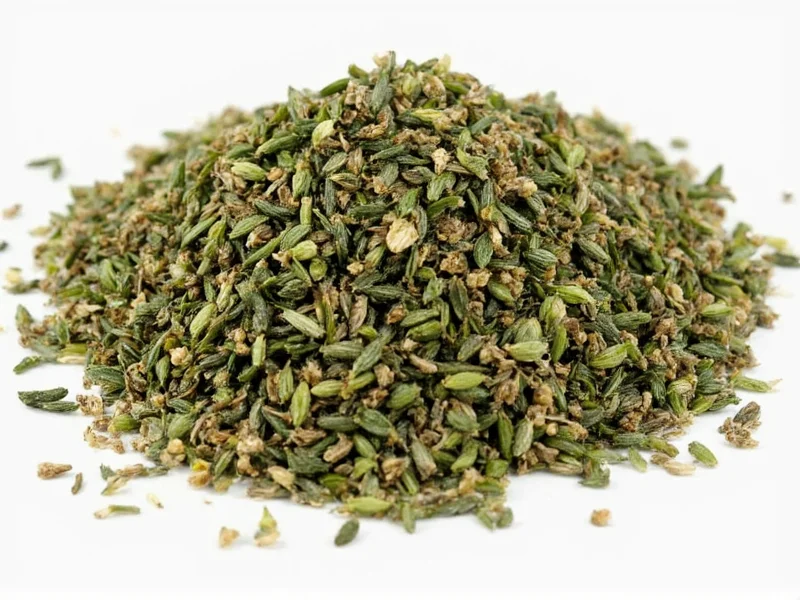Understanding herb conversions is essential for consistent cooking results. When substituting dried thyme for fresh (or vice versa), getting the measurements right prevents your dishes from becoming either bland or overpowering. This guide provides precise conversion information along with practical cooking insights that go beyond basic measurement ratios.
Why Dried and Fresh Thyme Require Different Measurements
Thyme loses approximately 70-80% of its moisture content during the drying process. This concentration effect means dried thyme delivers more intense flavor in a smaller volume. The essential oils responsible for thyme's distinctive earthy, slightly minty flavor become more potent as water evaporates. Professional chefs consistently recommend the 3:1 fresh-to-dried ratio because it accounts for this natural concentration while maintaining balanced flavor profiles in finished dishes.
Thyme Conversion Reference Chart
| Dried Thyme | Fresh Thyme Equivalent | Best Used For |
|---|---|---|
| ¼ teaspoon | ¾ teaspoon | Delicate sauces, dressings |
| ½ teaspoon | 1½ teaspoons | Vegetable dishes, eggs |
| 1 teaspoon | 1 tablespoon | Standard conversion for most recipes |
| 1½ teaspoons | 4½ teaspoons | Heartier stews, braises |
| 1 tablespoon | 3 tablespoons | Large batch cooking, preserving |
Practical Substitution Tips for Home Cooks
When converting between dried and fresh thyme, consider these professional kitchen insights. Add dried thyme early in the cooking process to allow time for rehydration and flavor dispersion, particularly in soups, stews, and braises. Fresh thyme works best when added during the last 10-15 minutes of cooking or used as a garnish to preserve its delicate flavor compounds. For marinades and rubs, dried thyme often provides more consistent flavor penetration.
Remember that herb quality significantly impacts conversion accuracy. Older dried herbs lose potency over time—properly stored dried thyme maintains optimal flavor for 1-2 years. Fresh thyme should have vibrant green leaves that spring back when touched, indicating peak essential oil content. When in doubt about herb freshness, start with slightly less than the recommended amount and adjust to taste.
Flavor Profile Differences Between Dried and Fresh Thyme
Dried thyme develops deeper, more concentrated earthy notes with subtle lemon undertones, making it ideal for robust dishes like roasted meats, tomato-based sauces, and hearty bean dishes. Fresh thyme offers brighter, more complex herbal notes with pronounced mint and citrus characteristics that shine in lighter preparations like fish dishes, vegetable sautés, and fresh salads.
Understanding these flavor distinctions helps you make informed substitutions beyond simple measurement conversions. In French cuisine, for example, dried thyme often appears in bouquet garni for long-simmered dishes, while fresh thyme garnishes finished dishes. Mediterranean recipes frequently specify fresh thyme for its aromatic qualities, while dried thyme works better in spice blends that require shelf stability.
Storage Recommendations for Maximum Flavor Preservation
Store dried thyme in an airtight container away from light and heat to maintain potency for up to two years. Fresh thyme stays vibrant for 1-2 weeks when stored properly: trim the stems, place in a glass with 1 inch of water, cover loosely with a plastic bag, and refrigerate. Change the water every few days. For longer storage, freeze fresh thyme sprigs in olive oil using ice cube trays—a technique that preserves flavor for up to six months while creating convenient cooking portions.
Avoiding Common Thyme Substitution Mistakes
Many home cooks make these critical errors when substituting thyme forms. Never use equal measurements of dried and fresh thyme—this almost guarantees an overpowering or under-seasoned dish. Avoid adding dried thyme at the end of cooking, as it needs time to rehydrate and release flavors. Don't substitute thyme stems for leaves in precise measurements; the conversion ratio applies specifically to leaf portions. When using thyme in raw applications like salad dressings, fresh thyme generally provides better flavor integration than dried.
Special Considerations for Different Cooking Methods
Certain cooking techniques require adjusted thyme measurements. In slow cooking or pressure cooking, reduce dried thyme by 25% since intense, prolonged heat extracts maximum flavor. For baking applications like breads and savory pastries, use ⅔ of the standard dried thyme measurement as oven heat intensifies herbal flavors. When making infused oils or vinegars, fresh thyme provides more nuanced flavor development, but requires double the standard measurement since the extraction process is less efficient than direct cooking.











 浙公网安备
33010002000092号
浙公网安备
33010002000092号 浙B2-20120091-4
浙B2-20120091-4